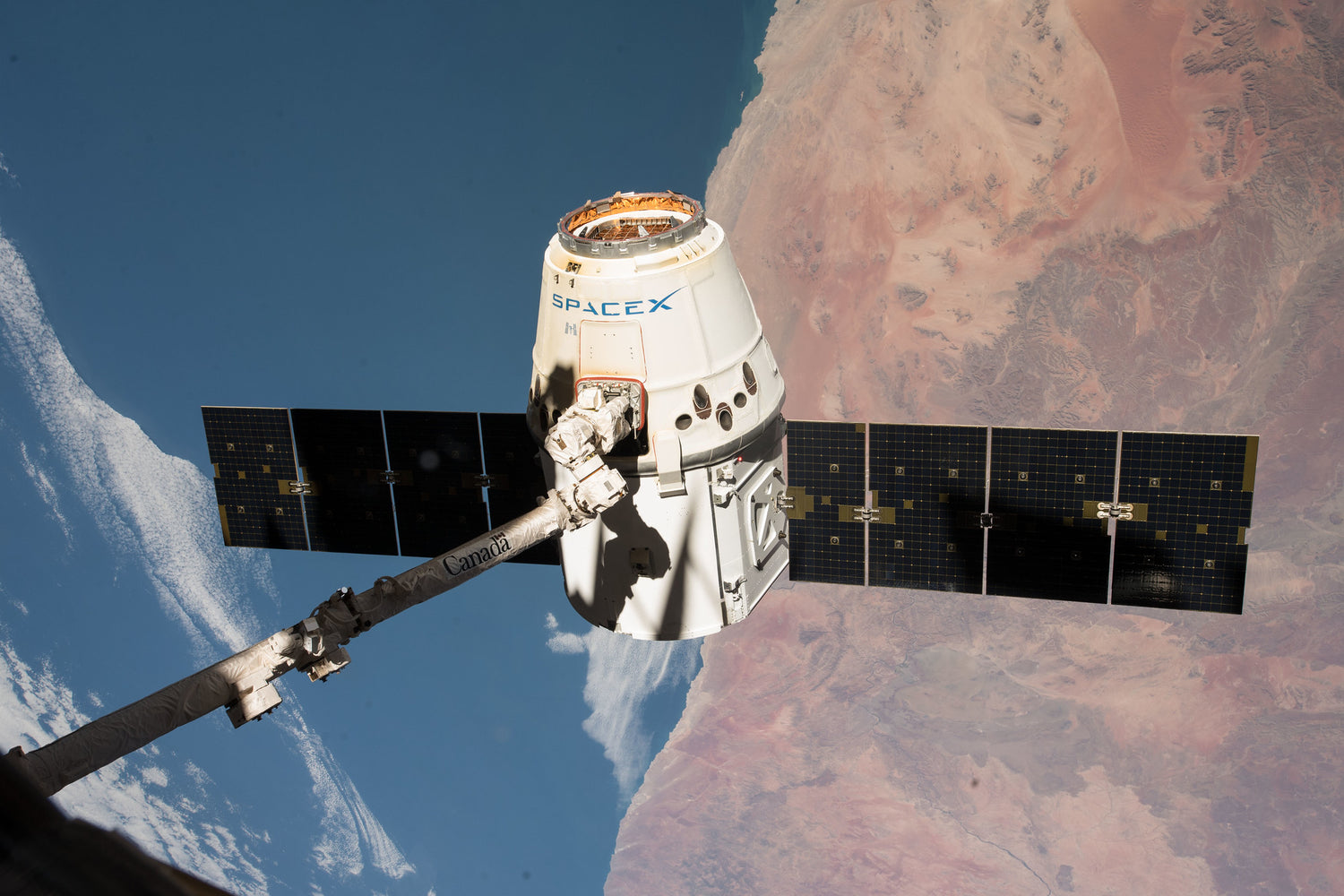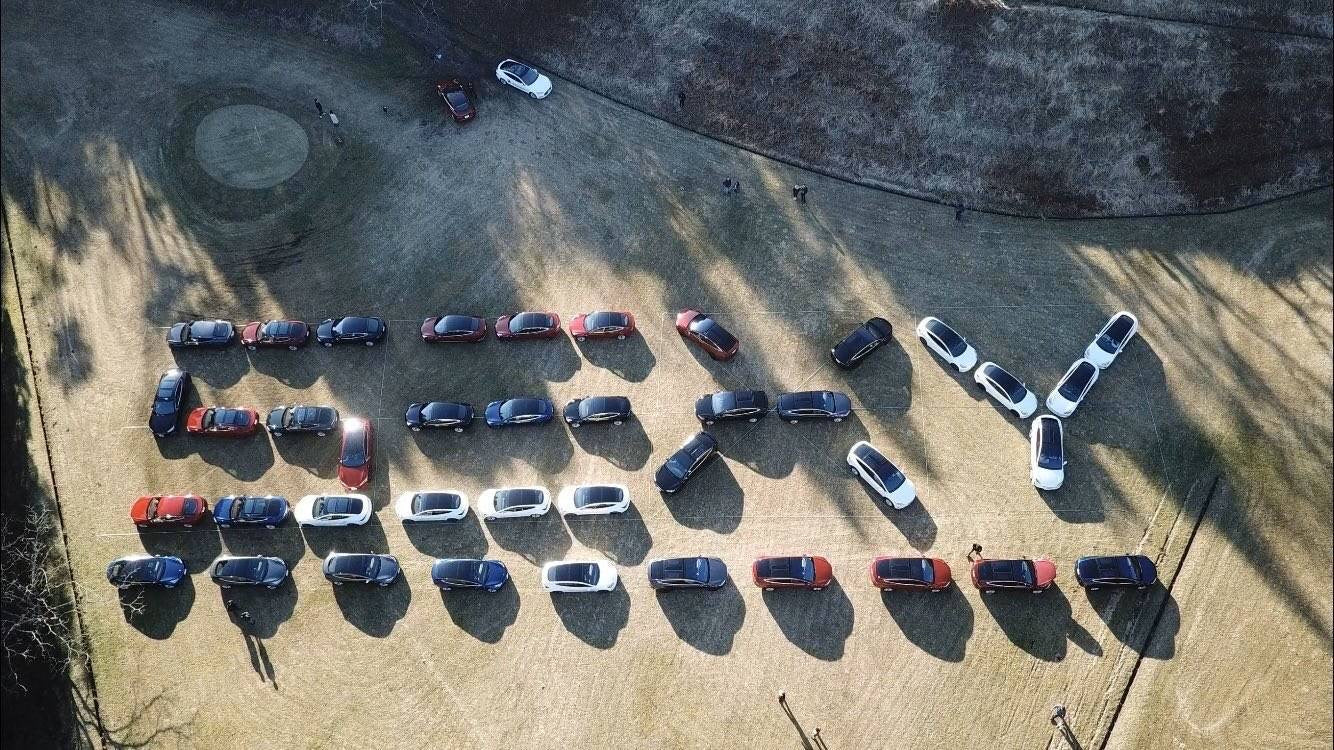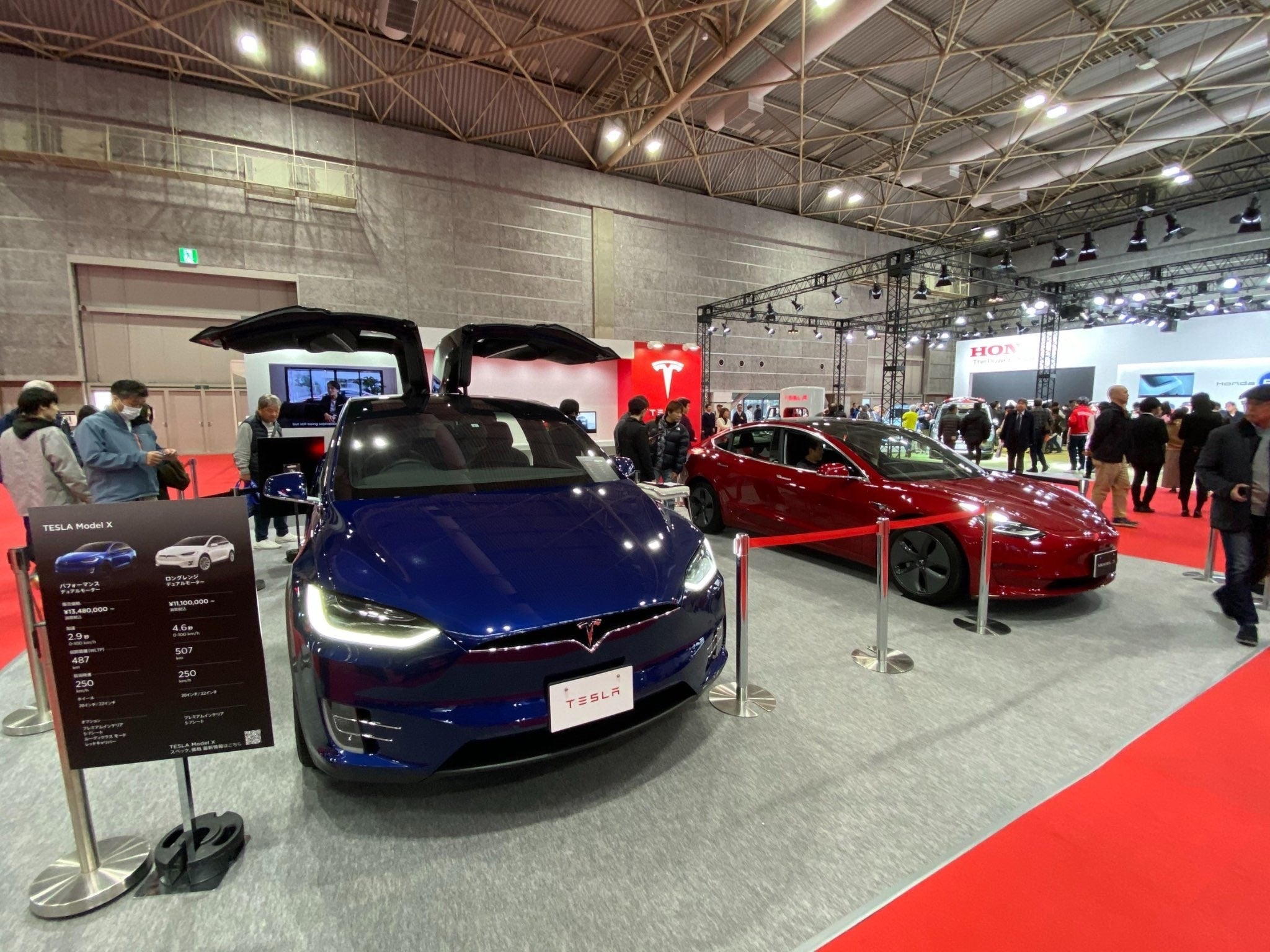SpaceX Dragon arrived to the International Space Station this morning with over 5,700 pounds of cargo!
December 8, 2019 • Evelyn J. Arevalo

Source: NASA
On December 5th, SpaceX launched a Falcon 9 rocket during SpaceX's CRS-19 mission -which marked the 19th mission under their Commercial Resupply Cargo Services contract with NASA. They successfully deployed their Dragon spacecraft with over 5,700 pounds of cargo to the International Space Station (ISS). This Sunday morning Dragon arrived to the space station, docking to the ISS robotic arm, Canadarm2. The station commander, Astronaut Luca Parmitano and Astronaut Andrew Morgan, controlled the large robot arm to grab the Dragon spacecraft 3 days after its launch from Cape Canaveral, Florida. Parmitano told Mission Control:
"Whenever we welcome a new vehicle on board, we take on board also a little bit of the soul of everybody that contributed to the project, so welcome on board!"
.@Astro_Luca shares a congratulatory message after he and @AstroDrewMorgan caught the @SpaceX #Dragon at 5:05am ET today with the @CSA_ASC Canadarm2 robotic arm. Read more... https://t.co/99GpYE9gpQ pic.twitter.com/Bmusbyo2xl
— Intl. Space Station (@Space_Station) December 8, 2019
A breakdown of today's Dragon spacecraft 5,769-pound supply load:
Today's cargo delivered to the station included a wide variety of equipment and packages of other supplies to conduct scientific experiments in microgravity.
•Science Investigations: 2,154 pounds
•Spacewalk Equipment: 141 pounds
•Crew Supplies: 564 pounds
•Computer Resources: 33 pounds
•Vehicle Hardware: 675 pounds
•Unpressurized Payloads: 2,037 pounds
[Note: The above mass does not include the weight of the packaging used to deliver cargo which is included in NASA’s overall payload mass.]
Some of the scientific experiments and equipment that were launched aboard the Dragon spacecraft include:
•CUBESATS: First Mexican Nanosatellite!
A total of 7 CubeSats, these are stored inside Dragon for deployment in orbit. The first nanosatellite built in Mexico was launched aboard this mission. It was designed and built by students at the Popular Autonomous University of Puebla (UPAEP), named the AztechSat-1. Héctor Simón Vargas Martínez, a UPAEP academic who overlooked the satellite project, said the aim of the AztechSat-1 mission is to establish communication with the entire Globalstar satellite constellation system with a view to improving the transmission of data to Earth. Sending the country's first Mexican made nanosatellite, even if its so small, made Mexico really proud. They reported the SpaceX launch on live television saying it's the beginning of a new era in Mexico, providing inspiration to the youth!
•MIGHTY MICE!
SeJinLee, a professor at the Jackson Laboratory and University of Connecticut School of Medicine, and his team sent a group of 40 mice aboard SpaceX's Dragon spacecraft. These mice will be used for an experiment that will study how to combat muscle degradation in space. "When we engineered the mice to lack myostatin, they grew to twice their normal size," Lee said during a NASA conference. "We call them mighty mice." These engineered mighty mice do not have a key protein called myostatin, which inhibits muscle growth. Myostatin can be used to treat a variety of muscle-wasting disorders. This research aims to figure out if blocking myostatin in mice can prevent muscle loss in space. The mice will live in four habitats on the station and will be compared with 40 other mice in similar habitats on Earth after returning in January. Upon experiment conclusion, all 40 mice are expected to return to Earth alive. This investigation will help aid in the creation of a potential solution for muscle degradation. "Astronauts lose muscle and bone mass, so anything to prevent this can help maintain astronauts during space flight," Lee said, "It's also a huge problem for people here on Earth, in both children and adults. We hope to test a therapeutic strategy that will help (people with) lots of different conditions."
•WORMS!
Another living animal launched to the station today, are 120,000 roundworms, that are part of an agricultural study aimed at controlling pests.
•Budweiser Beer Barley Seeds
Budweiser, the beer company, sent barley seeds to germinate in space. This experiment will be brought back to Earth so Budweiser scientists can understand how the plants germinated in microgravity. They will analyze, evaluate the malt quality, and compare gene expression in space plants versus plants on Earth. This kind of research is important because it will shed more knowledge on how crops grow in space. Researchers could then utilize what they learned to figure out the most efficient way to grow crops for future space travelers' food consumption.
•ROBOT HOTEL
A NASA "robot hotel" also arrived to the ISS today, it is actually a storage unit for vital robotic tools, named Robotic Tool Stowage (RiTS). This new storage unit will be hooked to the outside of the space station, like a garage. Astronauts will attach the unit during a spacewalk. Two vital leak detector robots, named Robotic External Leak Locators (RELL), will be stored inside. These leak detectors have mass spectrometers capable of "smelling" the presence of ammonia, among other gases. These robotic tools are used to detect leaks from the station, are operated by NASA from Earth, so having them stored outside is more convenient than having the two units taking up space stored inside the station.
•COLD ATOM LAB TOOL
NASAalso sent upgrades for its laser-powered Cold Atom Lab on the space station, which aims to create the coldest place in space to study the quantum effects on atoms. NASA Cold Atom Lab scientist, Robert Thompson, said this SpaceX Dragon launch will take a new science module to the ISS that will aid in their research to examine fundamental theories of gravity. The physics experiment equipment for the Cold Atom Lab produces clouds of ultra-cooled atoms called Bose-Einstein condensates. These temperatures that are ultra-cold act like a magnifying glass on atoms in a Bose-Einstein condensate, giving scientists the opportunity to better study its quantum traits. "One of the things we're going to be doing is a test of Einstein's equivalence principle [...] If that breaks down, we need new physics rules," Thompson said.
•FIRE!
Supplies for a combustion experiment were also delivered to the station. This will aid researchers to learn about the behavior of flames in microgravity.
•Japanese Hyperspectral Imager
The Japanese hyperspectral imager, that will gather high-resolution Earth observations in multiple wavelengths. Such observations could be utilized to monitor forests and farms, as well as a mean to identify energy and mineral resources.
•Artificially Intelligent Robot
An updated version of the CIMON robotic astronaut assistant, is also a part of this resupply mission. It is a 3D printed robot head with artificial intelligence. CIMON is designed to show empathy, able to sense emotions.
•HOLIDAY GIFTS!
This delivery also included some holiday gifts for the 6 astronauts living on the station!
“As far as presents and so forth, I’m not sure I want to divulge anything, but I think I would tell you that Santa’s sleigh is certified for the vacuum of space,” joked Kenny Todd, manager of space station operations and integration at NASA’s Johnson Space Center in Houston.

Source: NASA
These are just some of the interesting science experiments and supplies that arrived at the space station this morning on SpaceX's CRS-19 mission. All the experiments conducted at the International Space Station's laboratory, do benefit humankind. Some past experiments have aided in the creation of new technology and medicine that we utilize today.
Dragon's CRS-19 mission will end on January 6, then the craft will return to Earth making a splashdown into the Pacific Ocean near the California coast. The spacecraft will return about 1,800 lbs. of previous scientific experiments and tools that aren't occupied anymore, to Earth.
This was the third voyage for this particular Dragon capsule, its previous cargo missions took place in September 2014 and July 2017. It is the second time SpaceX has reused the same Dragon spacecraft three times for a NASA cargo mission, demonstrating the craft is capable of being reusable and still reliable to send cargo safely again. Reusing spacecraft significantly reduces the cost of manufacturing and operating which is beneficial to everyone involved. The company's next mission, CRS-20, aims to do the same.
Congratulations to SpaceX and NASA on another successful resupply mission from the Tesmanian team!








